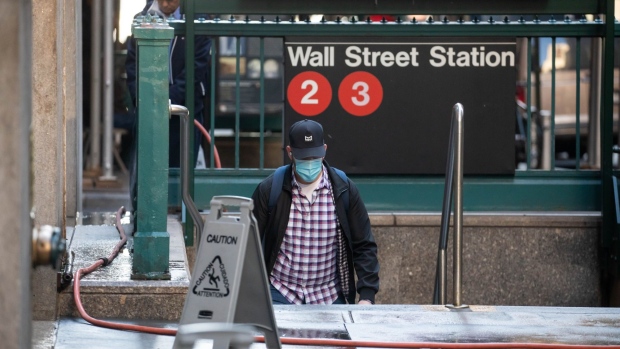May 25, 2022
NYC Subway Riders Return to Outer Boroughs While Business Areas Lag
, Bloomberg News

(Bloomberg) -- New York City’s subway system is struggling to win back riders going into Manhattan’s central business district, a blow for the Metropolitan Transportation Authority as it grapples with subway attacks and a budget deficit.
The MTA is at about 60% of pre-pandemic ridership. Weekday subway ridership has been increasing, reaching a pandemic record of 3.6 million as of May 18. But rider retention rates in Manhattan’s central business district, including Midtown and the Financial District, are still 50% or lower, the agency said Wednesday. By comparison, more riders are using stations located in the Bronx, Queens and Brooklyn. Rider retention rates in those outer boroughs are as high as 80%.
“System wide, what we are missing is trips to and from the central business district and within the central business district,” Janno Lieber, the agency’s chair and chief executive officer, said during its monthly board meeting Wednesday. “Some of what’s missing are tourists, I think those are coming back, but a lot of it is office workers.”
The largest mass-transit provider in the US relies heavily on ridership revenue and having commuters return is an integral part of its recovery from the financial hit it suffered during the pandemic. Farebox collections on subways, buses and commuter lines totaled $1.17 billion through April 30, $237 million below budget, according to MTA data. The agency, which faces a potential $2 billion budget deficit in 2026, is also at risk of using up federal coronavirus aid before it’s set to run out in 2025, Chief Financial Officer Kevin Willens said earlier this week.
Lieber, during Wednesday’s meeting, said the MTA has limited options and is calling on Albany to help solve its budget deficit.
There were 414.5 million subway and bus trips taken from January through April, about 99 million less than budgeted, according to data from the MTA. The agency has tried to boost ridership by offering commuters free rides and even free meals and hotel stays.
But many New Yorkers have embraced a hybrid work schedule that keeps them home for part of the week. Others have avoided the subways because of rising crime.
The city has reported 200 assaults inside the subway in the first four months of 2022, the most for that period since 1997, according to data compiled by the MTA. A man died on Sunday after being shot on a Q train heading into Manhattan from Brooklyn. The suspect, Andrew Abdullah, 25, who was identified as a criminal with a long rap sheet, surrendered to the police on Tuesday.
Other recent incidents have also made New Yorkers uneasy. A mass shooting last month inside a subway train in Brooklyn left at least 23 people injured. And in January, 40-year-old Deloitte employee Michelle Go was pushed to her death by a stranger in front of an R train from the subway platform in Times Square.
“We cannot afford to lose New York’s public space, especially our subways,” Lieber said. “We cannot let our system fail to become unusable, unavailable, or unreliable.”
©2022 Bloomberg L.P.


